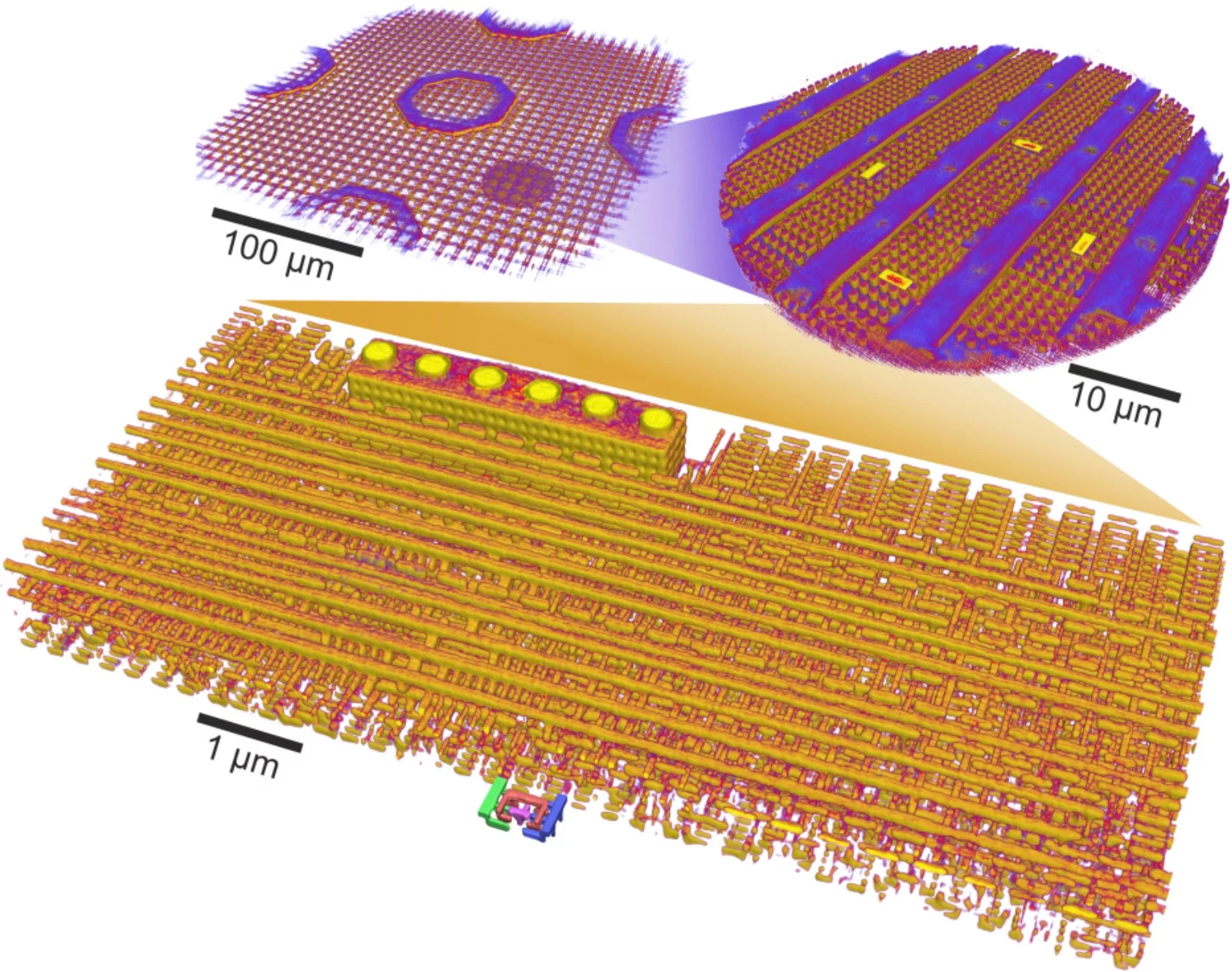Current Projects
Non-Destructive Imaging
X-rays offer the unique combination of high penetration and short wavelength which makes them ideal for non-destructive imaging. Highest imaging resolution is achieved bypassing the difficulties of manufacturing X-ray lenses and instead using lens-less imaging techniques. We use a variant of such techniques, called ‘Ptychography’, which combines scanning microscopy and coherent diffractive imaging. 3D microscopy is possible by acquiring many projections at different sample orientations, and thus non-destructive inspection and analysis becomes possible. In contrast, established techniques via electron microscopy require slice and view approaches, meaning the specimen is destroyed during the imaging process.
Details
Many-Body Localisation and Hole-Burning in Random Quantum Magnets
We study the phenomenology and the microscopic theory of non-linearly driven, many-body localised quantum magnets. We analyze the linear response far-off-equilibrium as a means to probe and characterize many-body localization.
Details
Hyper Quantum Criticality
Hyper Quantum Criticality – HyperQC is a major initiative with the aim of generating and controlling novel phases of correlated magnetic quantum matter, and of exploring them in high-precision experiments. A combination of new capabilities enabled by the development of instrumentation, pioneering ultra-fast studies and experiments on magnetic model materials will allow both the exploration of fundamental Hamiltonians and fully quantitative tests of quantum criticality in hyper-parameter space: temperature, magnetic field, pressure, energy, momentum and time.
Media Release
From Topology in Condensed Matter to Quantum Information and Spintronics
The possibilities to use topological protected boundary states and bulk excitations in quantum many-body physics as a platform for quantum information and spintronics will be investigated.
Details
Topological Quantum States
The focus of our current research is novel topological quantum matter including correlated topological insulators and newly discovered Weyl semimetals.Details
Electronic Structure of Novel Heterostructure Systems for Quantum Electronics
We use soft-X-ray photoelectron spectroscopy at the Swiss Light Source to explore electronic structure of buried interface and impurity systems (oxide, semiconductor and topological interfaces, proximity effects, magnetic impurities, etc.) which are in the core of nowadays and future quantum electronics.
Details
Molecular Nanoscience
Research activities involve controlling spins in adsorbed molecules by chemical and/or physical switches. We perform in-depth spectro microscopy correlation studies, also with Synchrotron light of various molecule-switch combinations in order to understand the mechanisms ruling the magnetic response. We are also active in on-surface chemistry and on-surface supramolecular chemistry to develop organic and inorganic surfaces and interfaces with new and tunable properties.Details
Nonlinear X-ray Spectroscopy
We intend to develop nonlinear X-ray spectroscopical methods in the hard and soft X-ray regime.Details







